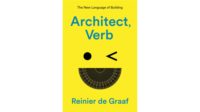A Book to Dive Into
A new work on a past master stuns with its beauty and highlights an important transitional practice for a new generation's scrutiny.
The texture of the stonework almost jumps off the page. Such is the quality of the photography and reproduction that the sensuous features of building materials appear tactile, almost hyperrealistic, when rendered in large-scale black-and-white prints. Page after page we encounter the architecture at varying scales: Detailed images of interlaced cast-iron or terra-cotta ornament pull the viewer in, while artful shots of surrounding neighborhoods, with real people, automobiles, and sunlight, from the 1950s and 1960s place the architecture in its urban milieu. We turn from whole to part to whole effortlessly, breathing in the massive city’s air — all prompted by the encyclopedic, loving rendition granted by this visual documentation that traces a firm’s trajectory.

At a time when many of us have declared the imminent death of the printed book, and when every firm in its infancy seems capable of launching a monograph, along comes a blockbuster that bowls us over. The book in question, The Complete Architecture of Adler & Sullivan, released this fall by the University of Chicago Press, revisits a powerful body of work and reminds us of architectural history’s ability to change our perspective.
The well informed might wonder why the excitement for this recent publication. Louis Sullivan has been extensively chronicled: Works completed in the previous century include Sullivan’s own writings, such as The Autobiography of an Idea (1924), and Robert Twombly’s Louis Sullivan: His Life and Work (1986). Other architectural books feature lush presentation — think of the litany of handsome books on Frank Lloyd Wright’s Fallingwater, for one example. However, The Complete Architecture of Adler & Sullivan warrants special attention for reintroducing an important subject to the 21st century through a comprehensive, beautiful photographic record.
If for no other reason, the enterprise deserves our admiration for its tenacity, as the story of its making spans generations. In 1952, Aaron Siskind taught a graduate photography class at the Institute of Design at the Illinois Institute of Technology. Among his students was Richard Nickel, who joined with others in documenting Sullivan and Dankmar Adler’s buildings. Following the initial effort, Nickel made Sullivan and Adler the subject of his own graduate thesis in photography in 1957. Soon after, Nickel collaborated with Siskind on a book project that assumed its own dynamic — Nickel became drawn to actual preservation of Sullivan’s legacy, from details to whole rooms, and in 1972 lost his own life in an accident during the demolition of the Chicago Stock Exchange building.
Fortunately, The Complete Architecture of Adler & Sullivan had proceeded far enough to merit completion and elicited support from a subsequent ad hoc group called the Richard Nickel Committee, which included Chicago architect John Vinci and architectural designer Ward Miller. Miller and Vinci persisted heroically across decades and share author’s honors with Siskind and Nickel.
The resulting effort recasts Adler and Sullivan’s accomplishments in ways that will encourage architects and historians toward reappraisal of the firm’s achievements. Their mastery of certain forms, particularly the design of theaters and assembly spaces, appears clearly throughout these pages, as do their early attempts at more rational and legible components for high-rise construction. In seeing the totality, we regret that too many buildings have been lost to the wrecking ball.
As expected, the book consists of a luxurious collection of black-and-white prints, typically taken with a large-format camera, as well as a selective assortment of color photographs. Interspersed throughout the pictures are essays on critical phases of the architects’ work, including early influences. The writers have compiled a complete catalogue raisonné of every project undertaken by the firm, with photographs and drawings where available. Gray, square, simple, and elegant in design, this book requires a big table: You cannot tuck it into a briefcase or carryall.
As much as Adler and Sullivan spanned a period when buildings surged upward, they also stood at a crossroads where people philosophized about structure. Their own construction pioneered certain techniques, such as individual footings for segments of tall buildings; at the same time, they also interlaced spandrels and cornices with organic and geometric ornament. In Adler & Sullivan, we are drawn to both currents in their work — the rational and the intuitive. The assembly halls and industrial buildings and urban blocks derived from the Richardsonian Romanesque architecture exhibit a powerful coherence and simplicity that presage Modernist design. But we are simultaneously lured into the naturalistic ornament.
Sullivan’s joy in materials and ornament — an interest that has found little accommodation in our own era — sings through the pages of this work.
This predilection is carefully documented through its progression in his own life experiences, from his years with Frank Furness in Philadelphia through his work in Chicago and beyond (St. Louis, Buffalo, across the Midwest), and even in the garden of his home in Ocean Springs, Mississippi. The unapologetic deployment of ornament warrants appreciation and understanding by practitioners today.
Now that we know the trajectory of architectural history and the ubiquity of high-rise construction, as well as the evolution of organic architecture, this book poses the question of where Sullivan’s conjoined structural and naturalistic motives have led. For our generation, pressed into more sustainable solutions by necessity and seeking artful expression of our own ideas, can Louis Sullivan’s ideals spur our own thought? As our buildings continue to race upward, we remain concerned with our relationship to the natural world. Adler & Sullivan opens the door to the dialogue while saturating our senses with architecture: a book and a subject to pick up, touch, and dive into.
If you wish to write to our editor-in-chief you can email him rivy@mcgraw-hill.com.



